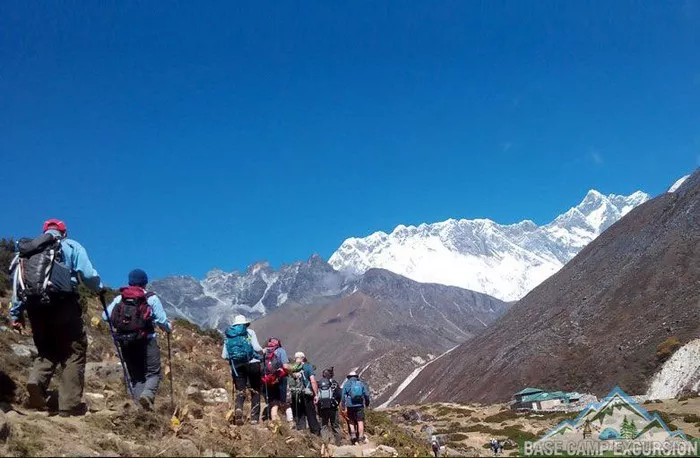Mount Washington, standing majestically at 6,288 feet (1,917 meters) above sea level, is the highest peak in the northeastern United States. Renowned for its unpredictable weather and challenging terrain, it allures adventurers from far and wide to conquer its summit. However, embarking on a hike up Mount Washington requires careful planning, including considerations of the route chosen, weather conditions, individual fitness levels, and overall hiking experience. In this comprehensive guide, we delve into the factors influencing the duration of a Mount Washington hike and provide insights to help hikers prepare for their journey.
Understanding the Routes
Mount Washington offers a variety of hiking trails, each presenting its own set of challenges and scenic vistas. Among the popular routes are the Tuckerman Ravine Trail, Lion Head Trail, and the Ammonoosuc Ravine Trail. The choice of trail significantly impacts the time required to ascend and descend the mountain.
The Tuckerman Ravine Trail, often regarded as the classic route, covers approximately 4.2 miles (6.8 kilometers) one way and is renowned for its steep ascents and rugged terrain. Depending on individual pace and breaks, hikers typically spend 4 to 6 hours ascending via this trail.
The Lion Head Trail, known for its stunning views and slightly less strenuous ascent compared to Tuckerman Ravine, spans about 4.5 miles (7.2 kilometers) round trip. Hikers commonly complete this route in 5 to 7 hours, including breaks.
Alternatively, the Ammonoosuc Ravine Trail, while longer at around 9 miles (14.5 kilometers) round trip, offers a more gradual ascent through picturesque landscapes. Hikers usually allocate 6 to 8 hours to complete this trail.
Factors Influencing Hiking Time
Beyond the chosen route, several factors influence the duration of a Mount Washington hike:
1. Fitness Level: A hiker’s physical condition significantly impacts their pace and endurance on the trail. Individuals accustomed to strenuous hikes may ascend Mount Washington more swiftly than those with less experience.
2. Weather Conditions: Mount Washington is notorious for its volatile weather, characterized by rapidly changing conditions, including high winds, low visibility, and sudden temperature drops. Adverse weather can slow progress and necessitate additional precautions, such as donning extra layers and ensuring proper hydration.
3. Trail Conditions: The condition of the trail, including terrain ruggedness, steepness, and presence of obstacles, influences hiking time. Muddy or icy sections may require cautious navigation, prolonging the journey.
4. Pack Weight: The weight of a hiker’s backpack, including food, water, and gear, affects their agility and endurance. Lighter packs typically facilitate faster progress on the trail.
5. Rest Breaks: Scheduled rest breaks allow hikers to recharge and admire the scenic beauty of Mount Washington. However, excessive or prolonged breaks can extend the overall hiking time.
6. Group Dynamics: Hiking in a group entails considerations of varied fitness levels and pacing preferences. Group cohesion and communication impact the efficiency of the hike and may influence the overall duration.
Tips for Planning a Mount Washington Hike
To optimize the hiking experience and ensure a safe ascent and descent of Mount Washington, hikers should adhere to the following guidelines:
1. Research Trails: Familiarize yourself with the available hiking trails, including their difficulty levels and notable features. Choose a route that aligns with your fitness level and hiking goals.
2. Check Weather Forecasts: Monitor weather forecasts for Mount Washington in the days leading up to your hike. Be prepared for changing conditions and equip yourself with appropriate clothing and gear, including rain gear and extra layers.
3. Start Early: Begin your hike early in the day to allow ample time for both ascent and descent before nightfall. Early starts mitigate the risk of being caught in inclement weather or darkness on the mountain.
4. Pack Essentials: Pack essential items, including water, snacks, navigation tools, first-aid supplies, and emergency shelter. Ensure your backpack is lightweight yet equipped to handle the challenges of the trail.
5. Hydrate and Fuel: Stay hydrated throughout your hike by drinking water regularly and replenishing electrolytes as needed. Consume energy-rich snacks to maintain stamina and prevent fatigue.
6. Monitor Pace: Pace yourself appropriately, taking breaks as needed to rest and refuel. Listen to your body and adjust your speed to avoid overexertion, especially during steep ascents.
7. Stay Together: If hiking in a group, maintain communication and stick together to ensure everyone’s safety. Establish checkpoints or regrouping spots along the trail to prevent individuals from falling behind.
8. Respect Nature: Leave no trace by practicing responsible hiking etiquette, including proper waste disposal and minimizing environmental impact. Respect wildlife and adhere to trail regulations to preserve the natural beauty of Mount Washington for future generations.
Conclusion
Hiking Mount Washington is a rewarding endeavor that offers breathtaking views and a sense of accomplishment. However, the duration of the hike varies depending on factors such as the chosen route, weather conditions, individual fitness levels, and hiking experience. By carefully planning your ascent, packing essential gear, and exercising caution on the trail, you can embark on a memorable journey to the summit of Mount Washington while ensuring your safety and well-being. Remember to respect nature, stay informed, and embrace the challenges and beauty that Mount Washington has to offer.

